On Saturday, 21 January, Cate Blanchett and British painter Jenny Saville were in conversation at the National Portrait Gallery to celebrate the opening of the largest major museum exhibition in the UK.
“Jenny Saville: The Anatomy of Painting” is on exhibition until 7 September. Tickets can be booked here.
Thank you to Meryl S. for their donation to the site. The site’s hosting renewal is two months away and we would appreciate if you can help us reach our goal by donating to the site so we can keep it open. You can follow this link to see our most recent mass update and on how you can donate.
Harper’s Bazaar published the conversation between the two artists that has been condensed and edited for clarity.
Jenny Saville, the leading contemporary artist, opens a groundbreaking exhibition at London’s National Portrait Gallery ‘Jenny Saville: the Anatomy of Painting’ this week. Charting three decades of work, the show is, what Saville refers to as her “greatest hits”. It tells the story of her artistic trajectory from the very early work ‘Propped’ (1992), the towering self-portrait that was the centrepiece of her Glasgow School of Art graduate show and precipitated Charles Saatchi to include her in his ‘Sensations’ show in 1997, through the intensity of motherhood, and ending in more colour saturated paintings of almost disembodied heads.
To celebrate its opening, Saville was in conversation with the actress Cate Blanchett, a longtime fan and admirer of the artist, moderated by the exhibition curator and senior curator of Contemporary Collections at the National Portrait Gallery, Sarah Howgate. Here they talk about the body as performance, the value of trusting your instinct and the importance of joy.
Jenny Saville I can’t remember who it was, but somebody said that you’d wanted to meet around the time of Sensation, because you’d seen my work, and we just didn’t ever hook up.
Cate Blanchett I knew of you and your work as soon as you sort of were catapulted out of art school. I was here probably filming for the first time in the UK, very alone, and wandered into the Sensation exhibition. There was so much provocative work, really memorable game-changing work, but it felt like it was your exhibition. I think I saw Propped there, and I just kept returning to this painting – it was like the body is landscape. I felt that it represented all the things, in a way, I’d spent my entire life trying to escape but also the reclaiming my body as a performer, but also as a human being. I felt a real affinity in the work.
There’s some work that actually changes and reframes what you think is possible. Being a performer on stage, which is where I feel most alive, to have that chance to reframe the way you can move through space was wonderful – to think that there was someone speaking to the ideas or the problems and the challenges that I was feeling at that time and continue to feel.
Sarah Howgate Jenny, you said you considered yourself to be a painter from a really young age. I think it was about 10.
JS I had a conscious feeling. It wasn’t a sort of declaration, like “I am a painter forever”. I liked painting and making things. It was just the language that I felt myself in.
SH You even had a broom cupboard didn’t you.
JS I did. I think my mother must have been fed up with me making a mess around the house. So she gave me this room, and I could make things in there and paint on the walls.
CB And was it a small space?
JS Yeah, tiny.
CB Because I had this cupboard. I must have seen in these child craft books, when I was growing up, the way children slept around the world. Apparently in Holland, they slept in cupboards. I got really obsessed with this. I had a cupboard that was probably about a metre by a metre, and I used to climb in there, close the door, and completely cover the walls. There was something about not being seen while you were in the act of drawing something, that in a large space, you can get lost.
JS The cupboard had a sort of bench. I just had a conscious feeling of going in there, you know, I’d wake up and think, oh, whatever I was doing the day before I want to continue doing that.
SH Do you ever think about your audience when you’re creating a work or staging an exhibition?
JS I think about a sense of communication. I’m going to communicate with people, but I don’t think about specific audience, like an age group. I’m aware when I’m making the work that this is going to be seen eventually. Sometimes if I’m making a group of works, I imagine the gallery space, and humans in the gallery space, but not specific people. I don’t consider: how is this going to be read? You can’t predict how anybody’s going to read anything that you make. Every individual comes with certain memories or ways they perceive images. And that’s the beauty of it.
CB It was interesting looking through the exhibition with you. There was one work that you said was a commission for Florence [Pietà, 2021], that was a really difficult, challenging work to make. Because, in a way, it wasn’t just the commission and the audience you were making it for. You were in dialogue, and part of the audience was Michelangelo himself. I often think that audience is not necessarily audience in the present sense, but it’s who you’re communing with in terms of the influences. That often can be more complicated. Sometimes it’s in response to older art.
JS I definitely like doing that. You kind of raise your game a little bit. I found that it’s been a useful way to add something to my work. That work wasn’t a commission, I was invited to do a response. It was shown in Florence next to the Michelangelo. A special thing.
CB What’s so incredible about seeing your work beautifully curated and put together, is that it is so alive and so vibrant and so full of movement. Even though some of those works were painted at a very young age some time ago, they are still so much in dialogue with what is swirling around now.
JS I think the core of my work has never changed. That’s what this exhibition has taught me. I’ve actually sort of made the same painting, but just come at it from this angle and that angle. I’ve tried to be experimental through the whole process of my work. I’ve had periods where I’ve become more painterly than when I’ve done a lot more drawing, I’ve become more interested in constructing the work from a drawing upwards.
I don’t really like looking backwards. I like to look at the work I’m about to make, or you always think of going a certain direction. But it is useful to see the ones from the past because you can feel that they still hold up. Like the ‘Stare Heads’ that I’ve made, there are painterly areas in that that I’m really pleased with, and I still think Bleach is pretty okay. And then there’s a painting at the end of the show that I made called Rupture that I’m really fond of.
CB Having put enough brush strokes on canvas, or having tread the boards enough times, or stood in front of a camera and endured the shame and humiliation of the first take, you realise that the one gift it gives you is simplicity, and that perhaps you need to do less. It’s interesting you talk about Rupture and it being your favourite work. Standing in front of it, because the work so powerful, so magnetic, you get drawn into the room, and you see that last. And there’s not a reduction, but this inherent simplicity in that work. It’s almost like you’ve taken things away, but it still has the same resonance and kinetic energy that the other work has.
JS When you make a body of work, you get kind of fit. That’s the only way I can describe it.
CB Show fit, as we call it in the biz.
JS I like it when I’m nimble on my toes, and I feel all the marks go in the right place at the right time, and the consistency of paint is good; the way that I build the head or the body just works, and it feels really natural – I seem to always like those paintings, because maybe it’s linked to an experience of it being so joyful, making it so you feel good. And sometimes paintings are a bit tougher in terms of just getting to articulate. When you make a body of work, the first ones can be tougher than and then it just kind of flows. And when I’m in the flow, I love it.
CB Is [using the body] an aspect of performance?
JS Earlier on, yeah. I would try to put my body in a position that was visually interesting. There was the tucked leg. My body has a kind of powerful musculature. I’d also be in positions which I just couldn’t ask the models to do. I’ve worked with a mirror, I tried to work out exactly how I could make what was in my imagination, or sculptures I’d looked at, or other paintings. How could I make that come alive? Paintings came off experiments like that. I don’t particularly like painting my own body. But once it’s on the canvas…
CB I mean, it’s a little bit like nudity and film, isn’t it? You think, oh, my children have to see this – they’ll probably see it while you’re painting it. But, do you have a sense that it becomes a landscape, or it becomes something other…
JS It’s a sort of way of articulating an idea of the nude. That’s what my early work was all about. In pregnancy, my body’s been interesting. I’ve done different self-portraits over the period. There’s a painting called Reverse that’s got a sort of third eye as a reflection, influenced by a war photograph. Shadows, reflections, they’re subjects that run throughout art history.
I definitely was fearless, using my own body a lot, when I was younger, but that’s moved into more fearlessness in terms of material, of painting. So you have to experiment and take risks. I mean, it’s just the nature of trying to develop. There’s always going to be a risk involved in that. It keeps me engaged.
More on Harper’s Bazaar UK.

Sarah Howgate, Cate Blanchett, Jenny Saville, Victoria Siddall
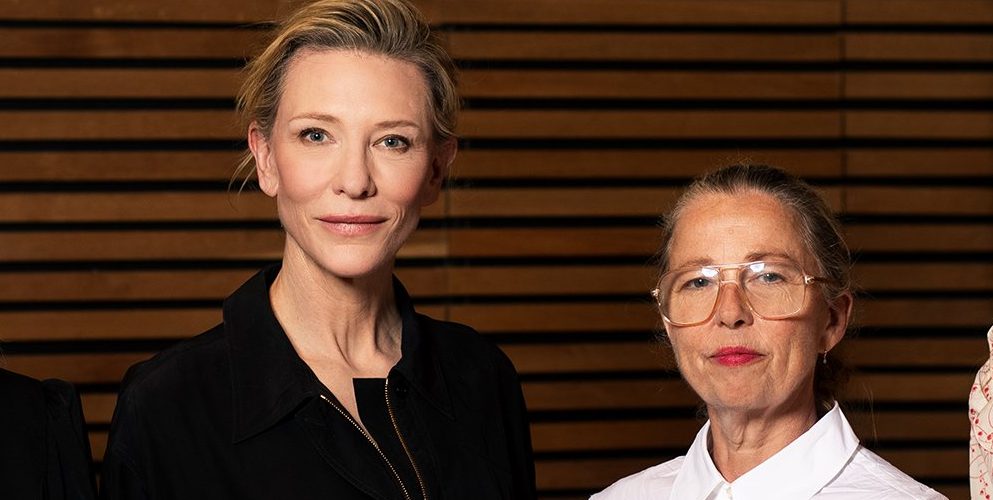
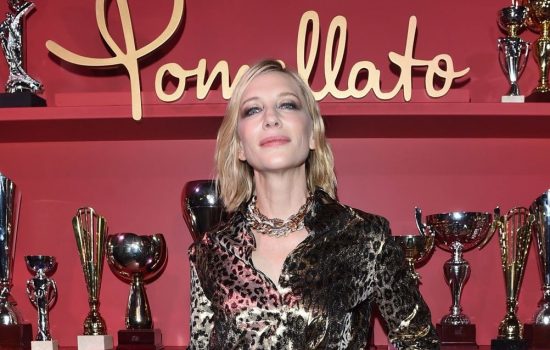
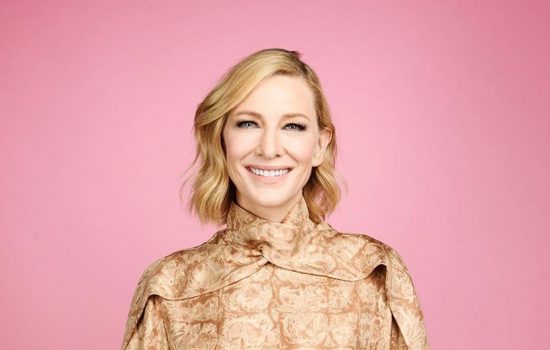

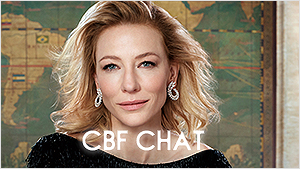
 A Manual for Cleaning Women (202?)
A Manual for Cleaning Women (202?)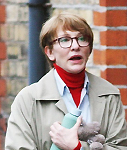 Father Mother Brother Sister (2025)
Father Mother Brother Sister (2025)  Black Bag (2025)
Black Bag (2025) 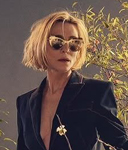 The Seagull (2025)
The Seagull (2025)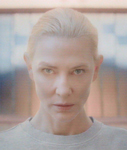 Bozo Over Roses (2025)
Bozo Over Roses (2025)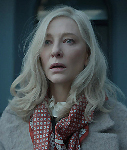 Disclaimer (2024)
Disclaimer (2024) 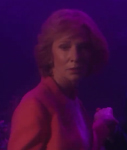 Rumours (2024)
Rumours (2024) 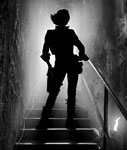 Borderlands (2024)
Borderlands (2024) 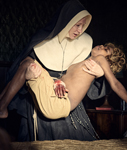 The New Boy (2023)
The New Boy (2023) 












Enjoyed this conversation